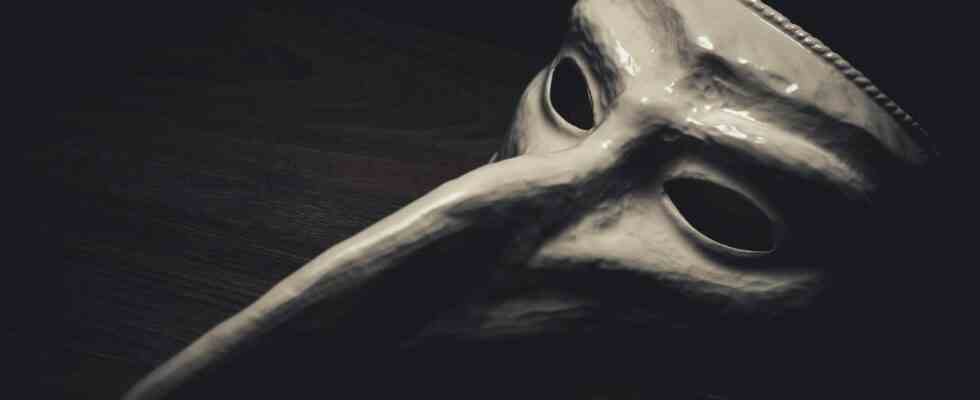genetic analysis
Source of evil: Researchers solve mysteries about the origin of the plague
Venetian mask to protect against the plague.
© Christian Ohde / Picture Alliance
For centuries, the Great Plague kept Europe in suspense. The Black Death took millions of lives. Where the plague came from remains a mystery. Now scientists want to have found the source of evil.
Her name is Bacaq. And their story makes history.
Bacaq. That was her name, this petite woman, just over 1.40 meters tall. Bačaq, who was in her 40s when she died in Kyrgyzstan. One of 114 people buried at Kara-Djigakh Cemetery over a period of two years. That was in 1338 or 1339. Almost 600 years later, it is their remains that are said to have solved one of the greatest mysteries in medicine – the origin of the Great Plague.
The plague is ancient. The pathogen probably already existed in the Bronze Age. And genetic analyzes show that the plague has been widespread among humans for around 4,000 years. The so-called Justinian plague, which shook the Mediterranean region in the middle of the 6th century, is considered the first historically proven plague epidemic. Between 1346 and 1353, the so-called Great Plague left a trail of death and destruction in Europe. The first big wave lasted about six years. Estimates assume that up to 60 percent of the population of the European continent succumbed to the Black Death. The pandemic gripped people for five centuries. The last major outbreak in Europe was in Marseille, lasting two years and ending in 1722. But the so-called Second Plague Pandemic lasted into the early 19th century. What remained in the end was the question: Where did the pathogen come from?
1338, the year the plague broke out
An international research group led by archaeogenetics Maria Spyrou and Johannes Krause now claims to have found the answer to the origins of the Great Plague that raged in the Middle Ages. “We managed to determine the origin of the Black Death and when it erupted – the year 1338 -” explains Spyrou, first author of the study, in a press release. The results of their interdisciplinary search for clues have now been presented in the renowned journal “Nature”.
Two of the most popular theories see China or Central Asia, modern-day Kyrgyzstan, as the source of evil, the origin of the Great Plague. The team led by Spyra and Krause investigated the Kyrgyzstan thesis. The starting point of the search for clues: a cemetery near Lake Issyk-Kul in the foothills of the Tian Shan Mountains. Archaeologists had discovered gravestones there almost 140 years ago, which made them ponder. Because the inscriptions suggested that there was an accumulation of deaths in the middle of the 14th century. A why can also be found on some of the stones. On these there is talk of a pestilence. The team of scientists took on the remains again.
Beginnings of the plague in Kyrgyzstan
The researchers found what they needed in St. Petersburg: genetic material. The Museum of Anthropology and Ethnography stores remains of people who came from the Issyk-Kul Lake region. The research team led by Krause took samples from the teeth of five people, including Bačaq, analyzed them in the laboratory in Leipzig and actually found the plague in some. More precisely: DNA of the bacterium Yersinia pestis. And with her they found certainty. Because at the end of further analysis and comparison with 203 modern and 47 historical genomes of this type, the research group knew that this plague strain from Kyrgyzstan is the one that started it all.
It was therefore also possible to prove that all other plague strains, which later caused mass deaths, go back to this very pathogen from Issyk-Kul. The strain of bacteria responsible for the last major European outbreak appears to be a “descendant” of the strain from Kyrgyzstan. It’s been three centuries since that eruption. Nevertheless, there are always outbreaks, for example in Madagascar. But medicine has come a long way since then. Nowadays, the plague can be treated with antibiotics.
Source: Max Planck Society,Nature, Scientific American, spectrum



